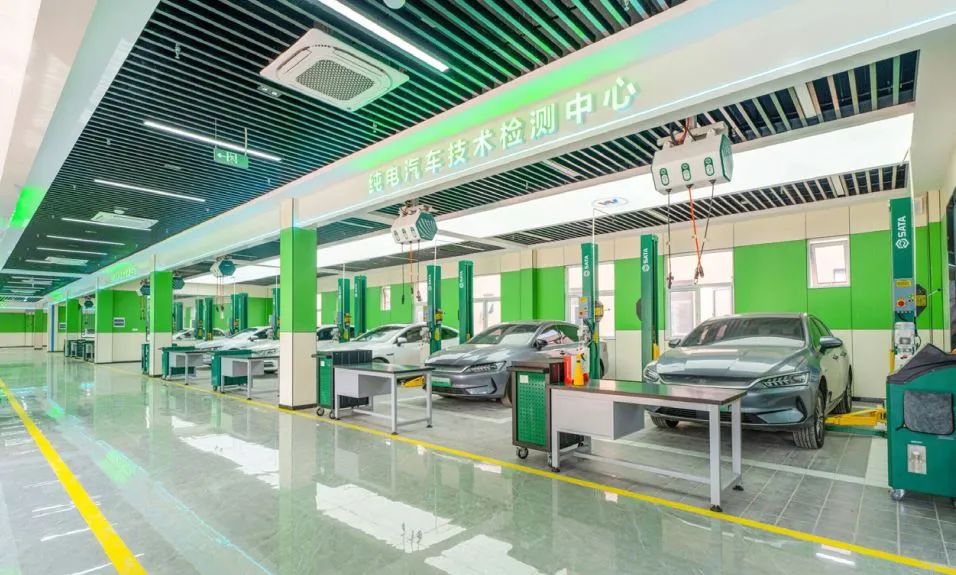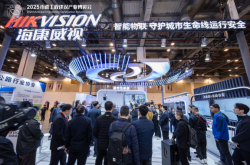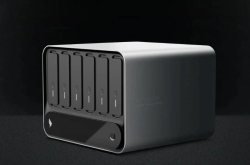Navigating the Growing Pains of New Energy Vehicle Maintenance
![]() 05/23 2025
05/23 2025
![]() 482
482
Despite the domestic new energy vehicle fleet surpassing 30 million units, the industry grapples with high after-sales maintenance costs, inadequate authorized service network coverage, limited capabilities in maintaining and testing the three-electric system, and a lack of standardization in the automotive film industry.
Reports indicate that by the end of 2024, China boasted 31.4 million new energy vehicles but only 20,000 to 30,000 maintenance enterprises and fewer than 100,000 skilled maintenance personnel. As the consumer base expands, enhancing the after-sales service system becomes increasingly challenging and urgent.
Hu Xiaodong, President of Tuhu Auto Service, recently stated at the China Electric Vehicle Hundred People Forum, "The new energy vehicle industry has shifted from quantitative to qualitative growth, and the aftermarket has become a pivotal link impacting its development and upgradation. The demand for inspection, maintenance, and emerging services for the three-electric system is rising, yet the average maintenance cost for power batteries remains high. Authorized service networks of OEMs and battery manufacturers are insufficient, the ability to maintain and test the three-electric system is limited, and the automotive film industry lacks standardization. To better meet the needs and expectations of new energy vehicle owners, we must focus on user needs and pain points, fostering multi-faceted supply innovations."
Consumer After-Sales Troubles
Mr. Wang, a Geely new energy vehicle owner, shared a frustrating experience with the media: After his car was hit, the left door was deformed. Although the insurance company promptly processed the claim, it took a long time to repair the car at the 4S store. "I waited almost 10 days for the door and another half a month to pick up the car," Mr. Wang said, noting that it would have been more convenient to visit the auto parts city for repairs, requiring only a phone call for an appointment and part replacement upon arrival.
In contrast, Ms. Luo, a BYD owner residing in Beijing, did not encounter issues with few outlets or long maintenance wait times but found that the price for replacing the same accessory at the 4S store was 5% to 10% higher than at the official maintenance store. There were also "special" requirements. "My taillights had a few scratches, and I wanted to keep the light when repairing the car, but the store said they had to replace the entire set due to insurance requirements. In the end, neither the intact light nor the broken lens was returned to us," Ms. Luo told reporters, explaining that due to insurance usage, repairs often necessitate visiting the more expensive 4S store.
Mr. Liu, a Lynk & Co owner, admitted to the media that the manufacturer repeatedly reminded him not to perform maintenance and repairs at non-officially authorized stores when buying the car. Consequently, he has been bearing the higher 4S store maintenance costs, which are nearly 50% more expensive than those of third parties. "A minor maintenance for my car costs two or three thousand yuan, but it would cost less than 1,000 yuan at an outside shop. However, I have no choice. If I don't get maintenance at the manufacturer-specified 4S store, the lifetime warranty for the three-electric system and vehicle warranty will be voided, resulting in even greater losses," Mr. Liu said, hoping that the manufacturer would separate after-sales from 4S stores to offer car owners lower prices and more choices.

Recently, numerous reports on new energy vehicle after-sales issues have emerged, with many users encountering annoying problems during vehicle maintenance. Some owners experienced battery failures, with 4S store quotes for battery module replacement being nearly 10,000 yuan higher than those of third-party maintenance points. For a popular new energy vehicle brand, owners needing high-voltage system inspections were told it would take weeks to schedule. Some owners had even worse experiences, with malfunctioning vehicles where the 4S store could not determine the cause.
Bai Kun, Executive Deputy Secretary-General of the National Federation of Industry and Commerce Automobile and Motorcycle Accessories Chamber of Commerce, said, "After-sales service, particularly the maintenance industry, serves as a guarantee for the development of the new energy vehicle industry. Its development level directly impacts user experience and the quality of the automotive industry's development. If the new energy vehicle after-sales service system is not improved promptly, it will inevitably adversely affect the industry's sustainable development."
Few Outlets, Limited Accessibility, High Investment
Why do these problems arise?
Firstly, there is a severe shortage of new energy vehicle maintenance outlets in China. According to the China Automobile Maintenance and Repair Industry Association, there are approximately 400,000 enterprises related to fuel vehicle maintenance and repair but only 20,000 to 30,000 for new energy vehicles. Industry insiders noted that since most new energy vehicle manufacturers' maintenance and repair centers adopt a direct sales model, the number of official centers is relatively small, resulting in significantly lower outlet density compared to traditional car 4S stores, causing some owners to wait long periods for maintenance and repairs.
A key reason for the limited number of new energy vehicle maintenance outlets is the current authorization system, where vehicle maintenance requires automaker authorization, and battery maintenance requires battery manufacturer authorization. While this model optimized costs and ensured maintenance service quality in the early stages of new energy vehicle market development, it may also lead to market monopoly, limiting consumer choices.
"The new energy vehicle aftermarket needs more social institutions to participate, reducing maintenance costs through full competition," industry insiders suggested. Following international practices, automobile companies can moderately open maintenance technology to vocational schools and social training institutions, protecting intellectual property rights while striving to establish a service system dominated by vehicle enterprises and supplemented by social comprehensive repair shops in the new energy vehicle after-sales service field, better serving new energy vehicle owners.
Additionally, the high threshold and investment nature of new energy vehicle maintenance restrict the expansion of third-party after-sales service outlets. Industry experts pointed out that traditional car dealers have ample experience in stocking consumable parts, but many enterprises may lack experience in determining the appropriate spare parts ratio for new energy vehicles, coupled with high costs such as power batteries, which can account for a quarter of the entire vehicle's cost. Another issue is the relatively closed accessory system for new energy vehicles. "When new energy vehicle parts are damaged and need replacement, traditional auto repair shops often struggle to purchase relevant parts, rendering repairs impossible even when technicians identify the problem," admitted a car repair staff member, highlighting the difficulty in finding new energy vehicle accessories for independent repair shops.
Moreover, while fuel vehicle repairs do not require extensive specialized equipment, new energy vehicles necessitate expensive equipment for tasks like disassembling, inspecting, replacing, and encapsulating the power battery pack assembly. Additionally, due to the current shortage of relevant technicians, labor costs are higher than for traditional fuel vehicles.
Prioritizing the Cultivation of Maintenance Personnel
The development of any industry, including new energy vehicle after-sales service, relies on talent development. By 2025, China's new energy vehicle maintenance technician talent gap is estimated to be at least 800,000, with the shortage of after-sales service personnel becoming a significant hindrance to the healthy development of the new energy vehicle aftermarket.
Zhang Yanhua, President of the China Automobile Maintenance and Repair Industry Association, shared statistical data with the media, revealing that fewer than 100,000 people are engaged in new energy vehicle maintenance in China. Only 24.7% of technicians can perform battery inspection and maintenance, and less than 5% have some understanding of assisted or autonomous driving but cannot perform related maintenance. Additionally, only 24.2% of existing maintenance workers hold an electrician certificate, qualifying them for new energy vehicle maintenance.
"Currently, China has 3,000 higher vocational colleges offering automotive majors, but the effective supply of graduates is insufficient. Only 28.3% of higher vocational college graduates enter the automotive industry, with only 32% of vocational undergraduates doing so. The skilled personnel entering new energy vehicle maintenance and service positions are even more limited," Zhang Yanhua said. In his view, the development of skilled personnel for new energy vehicle maintenance and service should be prioritized, with strengthened top-level design, leveraged resource advantages, optimized talent environments, and coordinated efforts from the government, enterprises, colleges and universities, and industry organizations to achieve practical results.
Furthermore, it is challenging for existing traditional auto maintenance personnel to transition. New energy vehicle after-sales service personnel must possess three core competencies: a high-voltage electrical safety operation certificate for insulated equipment, the ability to perform standardized battery disassembly and recycling, and the ability to read battery management system fault codes and perform basic data analysis. For traditional auto after-sales service personnel, self-improvement in these areas requires considerable time, energy, and money. Experts suggest that industry associations can introduce professional training courses, strengthen job transfer training and vocational training, and provide support for traditional auto repair technicians to "switch from oil to electricity".
Cinda Securities believes that by 2025, the passenger vehicle after-sales market will reach nearly 2 trillion yuan, with nearly 15% (about 300 billion yuan) attributed to new energy vehicle after-sales maintenance. By 2030, the scale of new energy vehicle "three-electric" maintenance in the aftermarket may reach about 40 billion yuan. For all participants in the new energy vehicle aftermarket, only by collaboratively addressing issues causing repair difficulties and eliminating major constraints on industrial development can they promote the stable and long-term development of new energy vehicles while achieving their own high-quality development.
Note: This article was first published in the "Industry Reports" section of the May 2025 issue of "Auto Review" magazine. Stay tuned for more updates.

Image: From the internet
Article: Auto Review
Typesetting: Auto Review




